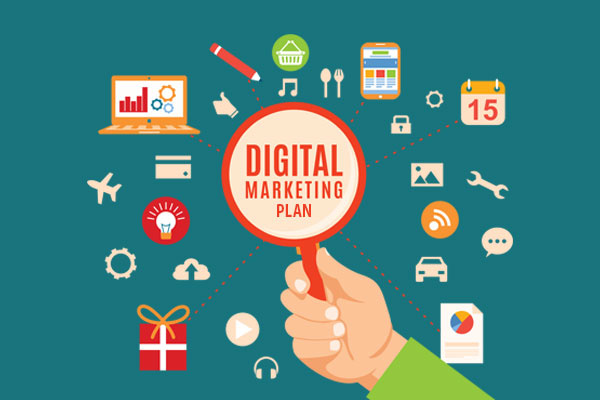In today’s fast-paced digital world, having a strong digital marketing plan is essential for businesses of all sizes. A well-structured plan helps you reach your target audience, optimize your resources, and ultimately achieve your business goals. Here’s a step-by-step guide to creating an effective digital marketing plan.

Table of Contents
Toggle1. Define Your Goals
Start by setting clear and measurable goals for your digital marketing efforts. These goals should align with your overall business objectives. Common goals include:
- Increasing website traffic
- Generating leads or sales
- Boosting brand awareness
- Improving customer engagement
- Enhancing customer loyalty
Use the SMART criteria (Specific, Measurable, Achievable, Relevant, Time-bound) to ensure your goals are well-defined.
2. Understand Your Target Audience
Knowing your audience is crucial for effective marketing. Conduct thorough market research to understand their demographics, preferences, pain points, and behaviors. Create detailed buyer personas that represent your ideal customers, which will help tailor your marketing messages and strategies to resonate with them.
3. Analyze Your Competition
Conduct a competitive analysis to identify your main competitors and their digital marketing strategies. Look at their strengths and weaknesses, content strategies, social media presence, and customer engagement tactics. This analysis will help you identify gaps in the market that you can exploit and give you insights into best practices.
4. Choose Your Digital Marketing Channels
Based on your goals and target audience, select the most effective digital marketing channels. Here are some popular options:
- Content Marketing: Create valuable content to attract and engage your audience.
- Social Media Marketing: Utilize platforms like Facebook, Instagram, and LinkedIn to reach and interact with potential customers.
- Email Marketing: Send targeted email campaigns to nurture leads and maintain customer relationships.
- Search Engine Optimization (SEO): Optimize your website for search engines to improve visibility and organic traffic.
- Pay-Per-Click (PPC) Advertising: Use paid advertising to quickly reach your audience on search engines and social media.
5. Develop Your Content Strategy
Content is at the heart of any digital marketing plan. Create a content strategy that outlines the type of content you will produce, how often you will publish it, and the channels you will use for distribution. Consider different formats such as blog posts, videos, infographics, and podcasts to cater to various audience preferences.
6. Set a Budget
Determine your budget for digital marketing activities. Allocate resources based on your goals and the channels you plan to use. Consider costs for tools, advertising, content creation, and personnel. A well-planned budget will help you manage expenses and maximize ROI.
7. Implement Marketing Automation Tools
Marketing automation tools can streamline your digital marketing efforts, saving time and increasing efficiency. These tools can help you manage social media, schedule email campaigns, track analytics, and nurture leads. Some popular options include HubSpot, Mailchimp, and Hootsuite.
8. Monitor and Measure Performance
Tracking your digital marketing performance is essential to determine the effectiveness of your strategies. Use analytics tools (like Google Analytics) to monitor key performance indicators (KPIs) such as website traffic, conversion rates, and engagement metrics. Regularly review your performance data and make adjustments as needed to optimize your strategies.
9. Stay Agile and Adapt
The digital landscape is constantly evolving, so it’s crucial to stay agile and adapt your marketing plan as necessary. Keep an eye on emerging trends, audience feedback, and changes in technology. Be prepared to pivot your strategies to maintain relevance and effectiveness.
Conclusion
Creating a strong digital marketing plan requires careful planning, research, and ongoing analysis. By defining your goals, understanding your audience, and selecting the right channels, you can develop an effective strategy that drives results. Remember to continuously monitor your performance and adapt to changes in the digital landscape to ensure long-term success. Start today, and watch your business thrive in the digital realm!


No responses yet